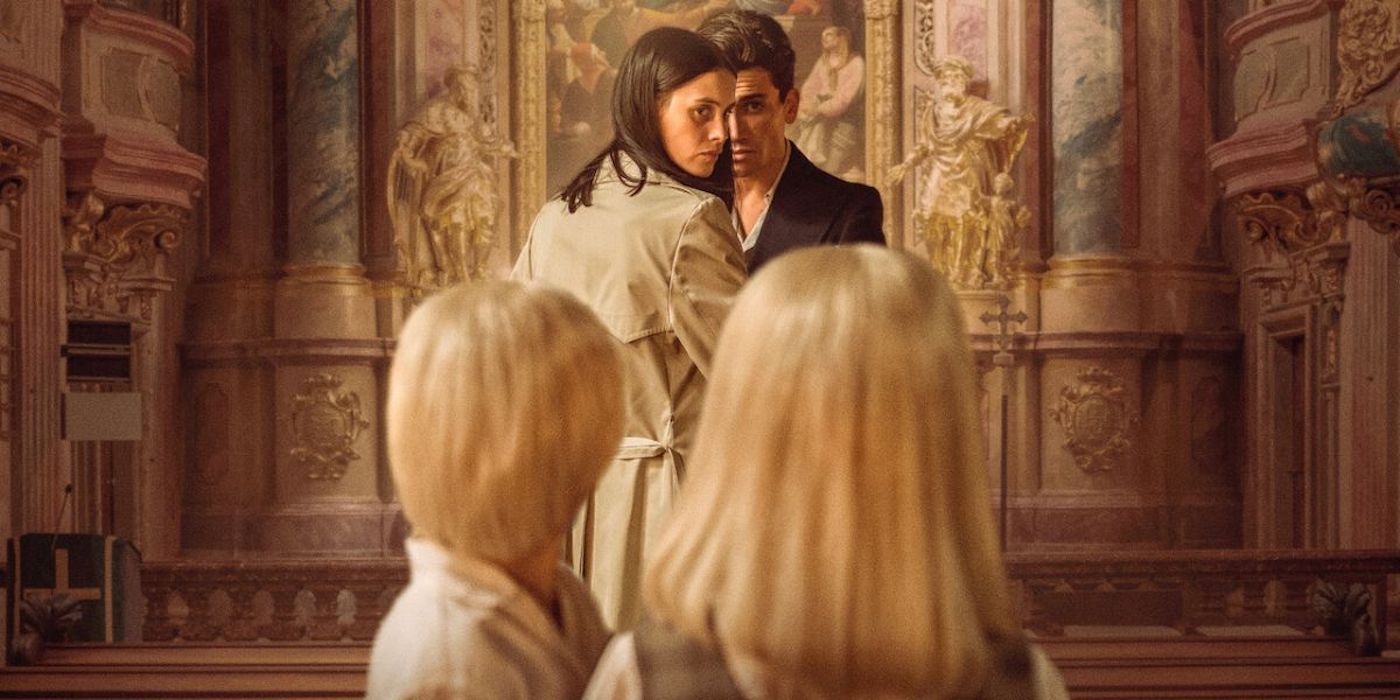"The scariest thing about faith… is when a child follows it without question."
An abandoned convent, two angel-faced orphans, and prayers whispered in the dark like echoes from beyond the veil — Tin & Tina (2023) isn’t your typical horror film. It’s a chilling descent into the shadowed heart of religious devotion — a spiritual nightmare where the real terror is not the devil… but God, as seen through the eyes of children who believe too much.

Set in early 1980s Spain, the story follows Lola and Adolfo, a young couple mourning the loss of their unborn child. Seeking healing, they adopt twin siblings from a Catholic orphanage: Tin and Tina. Sweet, well-mannered, and devout to a fault, the children worship the Bible with fervor — and take every word literally. Their faith isn’t symbolic — it’s ritualistic, absolute, and disturbingly pure.

The unease begins when Lola’s home subtly transforms into a secret chapel, filled with purification rites, blood-soaked repentance, and scripture recitations that echo into the night. Every act the children commit — in the name of love and salvation — carries a strange, suffocating tension. Their innocence is unquestionable. But so is their fanaticism. As the prayers grow louder, shadows creep into Lola’s dreams — blurring the line between divine intervention and religious psychosis.

What sets Tin & Tina apart isn’t jump scares or gore. It’s the way it makes faith feel claustrophobic, weaponized. The film’s bright white light doesn’t offer peace — it exposes, isolates, chills. And the children’s devotion — unwavering, unyielding, unquestioning — becomes its own form of horror. You begin to wonder: if a child acts in the name of God, is that child still responsible for the consequences?

Tin & Tina (2023) is a holy dream steeped in dread — not meant to purify, but to reveal how even the purest faith… can rot from within.



